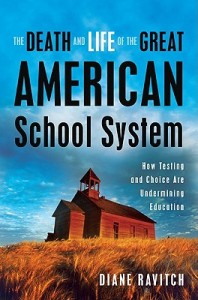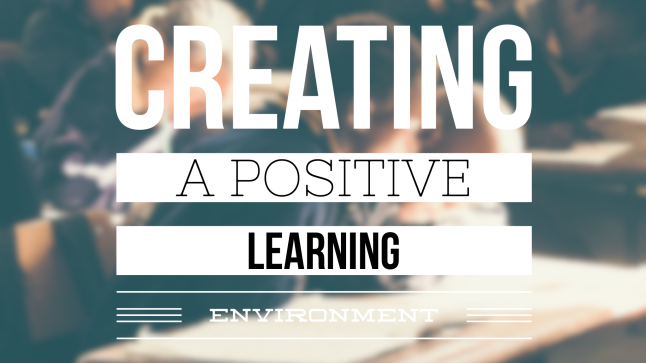Book Review:

The United States of America’s school
system has constantly been criticized for its failure in addressing its
downfalls. Diane Ravitch the author of “The
Death and Life of the Great American School System”, breaks down these
issues and addresses the root cause of the problems within the school system. Ravitch
was a traditional educator who believed in the ideals that supported the No
Child Left Behind (NCLB) reform of 2002. She and her mentor, Lawrence A. Cremin,
were both traditional educators who saw the instalment of standardized testing
and accountability as a step forward. What makes Ravitch such a solid source is
due to the fact that she flipped her perspective and now strongly advocates for
a change in the school system. She argues that standardized testing not only
hinders student growth, but also completely stalls the education system as a
whole. Ravitch begins with an introduction to the pillars on which the education
reform was built upon, such as the bell curve, punishments based on test
scores, and a gap in education between the poor and the rich. She then assesses
the disparities that NCLB initiative attempted to address, but failed to do. She
expresses how although she initially was excited for the reform, and saw an
opportunity for real growth, she soon saw the major deficiencies that arose
with the reform.
As an initial advocate for
accountability, standardized testing, and all the principles that accompanies
the ideals on which the No Child Left Behind act set in place by George W. Bush
in 2006, Ravitch was a picture perfect “reform” educator. The No Child Left
Behind Act, essentially made educators, and schools responsible for low test
scores, and created an emphasis on test preparation, in order to raise the
nations low test scores. Ravitch played a large role in the installment of the
curriculum for the federal government, during a time when installing any
curriculum by the federal government was considered illegal. Her colleagues and her, found loopholes that
allowed the federal government to install curriculum by making it seem as
though the schools were electing that curriculum. Ravitch details the beginning of education as
a business, and how these business tactics would help to move education from an
era that stalled and saw no progress into a new era, where a business model
would supposedly have all the answers. She bought into the very fads that she
had initially despised. Ravitch’s perspective changed from educator to
administrator “[w]ith the collapse of communism and the triumph of market
reforms in most parts of the world, it did not seem to be much of a stretch to
envision the application of the market model to schooling” (79). Applying the market models to education
allowed the administration to no longer take place in the “blame-game” as
everything was decided based on numbers. It wasn’t until the reform was finally
enacted in schools across the nation, that it began to fail. She experienced a
severe shift in perspectives as all of the deficiencies of these ideals came to
light. Her entire educational belief system had failed her. This is what led
her to go through a time of critical doubt that in turn helped her create a new
philosophy on which she can base her system of education. The market reform
proved to be an awful system for both students and teachers alike by removing the
individuality from the education system. In addition, the emphasis on testing also
proved to be an issue.
Ravitch states in her book that, “[t]esting,
[she] realized with dismay, had become a central preoccupation in the schools
and was not just a measure but an end in itself” (85). Ravitch gives readers
some serious food for thought: she appeals to both sides of the administrative
takes on education. She gives us a glimpse into the inner workings of the
market reformed administrative system, as well as highlights the shortcomings
of said system. What was important to administrators were test scores.
Suddenly, a form of measurement became the goal of education. Ravitch had begun
to notice that “constant test preparation sometimes generated higher test
scores- but it had nothing to do with education” (91). Ravitch goes on to elaborate on the impact “a
nation at risk” had during the times of education reform, and how it’s legacy
left schools without a real framework. “A nation at risk” was a report
published in 1983 by a presidential commission on excellence of Education during
the Reagan administration. At the time it detailed the failing of the current American
school system. It was misinterpreted and used as leverage for the politicians even
though it had honest intentions and seemingly unbiased rhetoric throughout the
work. The misinterpretation came from the lack of solid solutions to the problems
laid out in the report. This allowed the “market-reform” to take hold by
seemingly providing these solutions. The market reform only went on to further
neglect the poverty and racial segregation that contributed to the lack of
uniform education throughout the nation.
Ravitch lays out all the information in a
series of events, all beginning from the tumultuous start of the market based
curriculum, leading up to the reform that occurred in 2002 with the NCLB act.
She begins by detailing the A Nation at Risk (ANAR) report, which began the groundwork
for the NCLB act to thrive upon. It was of great importance during the Reagan
administration due to the fact that it was a culmination of all the
shortcomings that were happening in the United States of America. The
republicans used schools as a scapegoat for all of these shortcomings. Ravitch
takes us through all this in detail, in order to bring to light the events of
the past that have directly had an impact on schooling today. Ravitch’s
perspective fits with the discussion happening in the field currently. It
aligns mostly with the perspective of educators. It addresses the same issues
as that of a student, but it does this through the arguments of the educators. Ravitch’s
book is of great relevance to the current conversation, where people are
arguing about the true nature of education, and how the current school system
is neglecting this nature and stifling growth for both the school system, and
the students.
Ravitch concludes by addressing the root
cause of the disparities as the lack of uniform education throughout the
nation. Students and administrators alike would benefit from reading this book,
as it gives history for the basis of the current education system, and gives
readers an idea as to what lead to the reform, and how it can be addressed. This
book allows people to see how education reform isn’t a one-stop fix, but rather
a series of progressions leading to a more efficient system. It also allows
readers to understand the vital role that teachers play, and how powerless they
are when it comes to administrative problems. It gives students, especially, an
idea of who’s to “blame” for the mishaps that are happening with the education
system, as well as more respect for their educators, who become the mediators
between the truth behind the education system, and their students.
In conclusion, Ravitch’s work in “The Death and Life of the Great American
School System,” puts forth the complicated issues present in the school
system through the perspective of both educators and students. The book allows
readers to become more informed on their school system. I highly recommend this
book for anyone interested in the past errors of the education system in the
United States of America. Ravitch lays out information that students,
educators, parents, and administrators can all easily understand and take
action with.
Diane
Ravitch
“The
Death and Life of the Great American School System.”
Published
2010.
400
Pages.
$34.83.

